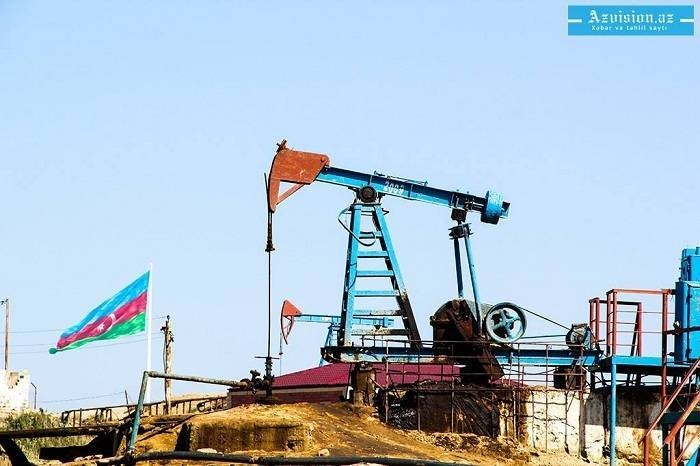A spate of news hit the oil markets on Wednesday—from downgraded estimates on U.S. crude production and global demand, to plans by Saudi Arabia and the United Arab Emirates to boost output—giving traders a lot to chew on during an uncertain time in the market driven by COVID-19 concerns.
“All of the data points we look at suggest that April will be a very cruel month for oil prices,” said Tom Kloza, global head of energy analysis at the Oil Price Information Service.
In Wednesday dealings, U.S. benchmark April West Texas Intermediate crude CLJ20, -4.184% fell by $1, or 2.9%, to $33.36 a barrel, while May Brent crude BRNK20, -4.415%, the global benchmark, shed 84 cents, or 2.3%, to $36.38 a barrel.
Prices on Monday for WTI fell by nearly 25% and Brent lost about 24% with both grades suffering the largest percentage declines since January 1991 and settling at their lowest since February 2016, according to Dow Jones Market Data.
Oil prices bounced higher on Tuesday, but news Wednesday was mostly bearish, sending prices lower again.
In a weekly report Wednesday, the Energy Information Administration reported a seventh straight increase in U.S. crude supplies, which climbed 7.7 million barrels for the week ended March 6. It also lowered its domestic crude production estimate by 100,000 barrels to 13 million barrels a day.
In a separate monthly report, the government agency lowered its 2020 expectations for U.S. crude-oil production by 1.6% from its previous forecast to 12.99 million barrels a day. It also reduced its WTI oil price forecast by 31% to $38.19 a barrel and Brent oil price view by 29% to $43.30 this year.
The EIA also slashed its expectations for 2020 retail regular-grade gasoline to $2.14 a gallon, down nearly 16% from its previous forecast. It expects retail prices to fall to a monthly average of $1.97 a gallon in April, before climbing to an average of $2.13 from June through August.
“That is quite an aggressively low prediction from EIA on April gas prices—$1.97” a gallon, Kloza told MarketWatch. “One has to believe that we’ll see some U.S. demand destruction tied to social distancing” due to COVID-19.
Meanwhile, there was some good news for consumers. The EIA, in its winter fuels outlook report, said it expects both natural gas and electricity bills to decline by 1% and home heating oil by 4% for the average U.S. household during the October to March winter season.
In other news tied to production, Saudi Arabia, the de facto leader of the Organization of the Petroleum Exporting Countries, unveiled plans to boost oil-production capacity to a record 13 million barrels a day, according to The Wall Street Journal.
And OPEC member United Arab Emirates said its state-owned Abu Dhabi National Oil Co. will lift its production by 1 million barrels a day to more than 4 million barrels a day next month, Bloomberg News reported Wednesday.
Russia, which is not a member of OPEC, on Tuesday said it would increase output to respond to signals Saudi Arabia was preparing to boost production.
The oil-producer moves follow the collapse of talks in Vienna between OPEC and its allies, including Russia, on Friday, which ended without an agreement to further curb output.
Kloza said he was not sure if the UAE has the capacity to move to the levels they promised for production, but it is “now clear” that the Saudi Arabia-Russia “catfight has a third feline in the brawl.”
The price war between the major producers fIies in the face of expectations of a slowdown in oil demand as the spread of COVID-19 hurts global economic growth. OPEC had been trying to get Russia and other allied non-OPEC producers to agree to additional production cuts to help alleviate losses tied to lower demand expectations, but those efforts failed last week.
“The Russians want to gain market share by putting prices low enough to cause U.S. shale production to drop, but they won’t get much by adding to their own production,” James Williams, energy economist at WTRG Economics, told MarketWatch, pointing out that without production quotas, Russia output may go up by around 100,000 to 200,000 barrels a day. “They don’t have spare capacity. The Saudis do, and doubled down in this game of Russian roulette.”
On Wednesday, OPEC slashed its forecast for 2020 growth in oil demand by 920,000 barrels a day to 60,000 barrels a day, reflecting expectations for slower economic growth due to the spread of COVID-19 outside of China.
Earlier this week, the Paris-based International Energy Agency projected oil demand would fall by 90,000 barrels a day this year, which would mark the first annual fall since 2009.
The non-OPEC driver of oil prices is “consumption loss from the impact of the coronavirus on the world economy, especially transportation and in the first and second quarters,” said Williams.
“Forecasts are all over the place because the economic impact as well as recovery later in the year is hard to predict because of lack of data,” he said. “Too many unknowns the length of the epidemic and its spread are the big variables.”
Myra P. Saefong, an assistant global markets editor, has covered the commodities sector for MarketWatch for 20 years.
Read the original article on MArket Watch.
More about: oilprices
















































